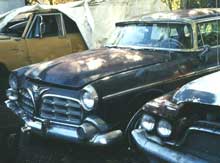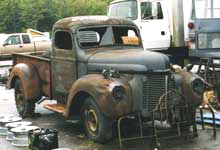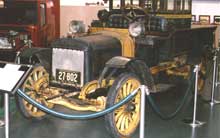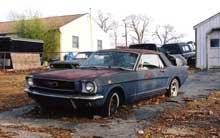Imperial Measures
DaimlerChrysler is teasing us with a new Imperial. I wonder whether it's intended to be a Chrysler Imperial, or an Imperial Imperial. Poor Imperial has had an identity crisis for much of its intermittent life.
For its first 26 seasons, Imperial was the mightiest Chrysler. Introduced in 1926 as the Imperial 80, it bore hallmarks that set it apart from lesser Chryslers - a set of distinct bonnet flutes borrowed from Vauxhall. By the time of the Full Classic™ 1932 it was more like the rest of the line. In 1941, it was nearly traveling incognito.
By 1953, Imperials were getting their own faces, and in 1954 there was a different grille for each flavor of Chrysler. Small wonder, then, that 1955 Imperials not only had their own features, they had their own name as well. No longer sold as Chryslers, the cars with the microphone taillights of Virgil Exner's d'Elegance were Imperial both in name and appearance.
In 1957 came distinctive roofs, microphones embedded in the new corporate fins, along with the first of the "doughnut decks" that the wags indelicately call "toilet seats." For the first time a convertible was offered. The 1958 grille was mercifully bland compared to some of the competition, but I find the hungry grin of the 1960 models a bit overbearing.
For 1961 came what I call the consummate Imperial. The hanging microphones were a bit much, but the car's lines were stunning. The free standing headlamps were exquisite, well worth the trouble it took to wash them. Nick Pagani's '62 Crown convertible, one of 554, is testament to this elegance, though the microphones had turned into gunsights. Sixty-three was an anticlimax, both in its grille and its taillights borrowed from the 1964 Valiant.
For '64 it was ex-Ex and all Engel, as in goodby Virgil, hello Elwood. Elwood Engel, newly from Ford, liked perpendiculat themes, though he allowed himself a bit of a bustle. By 1968, Imperial was into Chrysler's cubist period, shorn of the bum bump but keeping the Electrolux motif. The end came in 1975, by which time Imperial was into standup grilles.
To be sure, there was a brief revival from 1981-83 with a coupe that crossed Cadillac Seville sculpture with Lincoln Mark VI coziness - most memorable was the Frank Sinatra edition with "blue eyes" interior and full set of FS audio cassettes. Thereafter, Imperial became just another Chrysler K-car model.
So what to make of this new Imperial concept? I see it as muscular, a mighty fortress, styled, perhaps, by the person who did Rolls' New Phantom (and who, I suspect, formerly worked at Freightliner). Maybe it should be called "Imperial Majesty."
CarPorters with Imperial aspirations should visit the Online Imperial Club, from which some of our illustrations are linked. Imperial Club is a cybermeetingplace with vast resources, like a complete catalog of models, spotter's guides and information archives. Dave Duricy's Imperialist is a intellectual information center with multimedia methods. Check 'em out.




